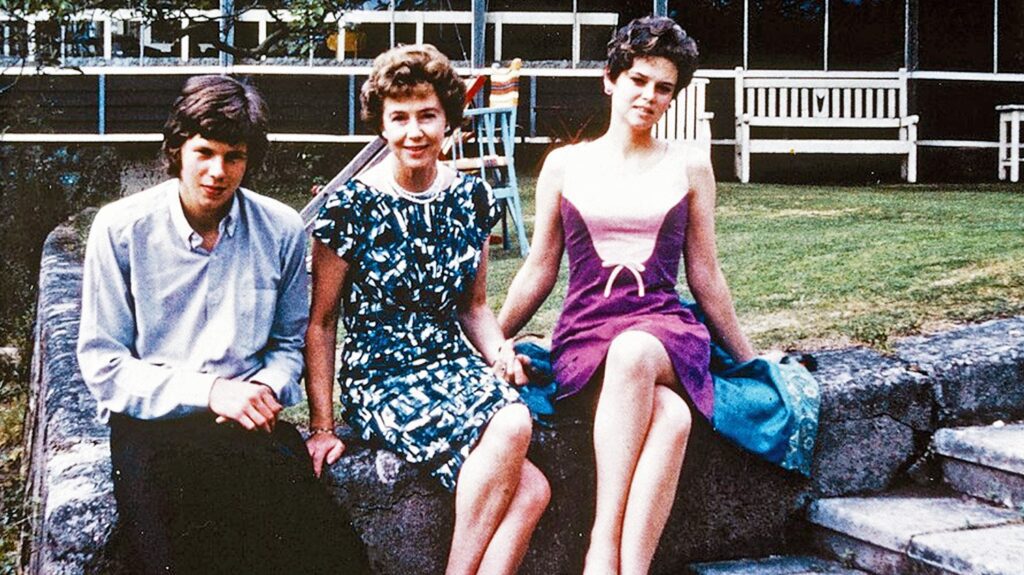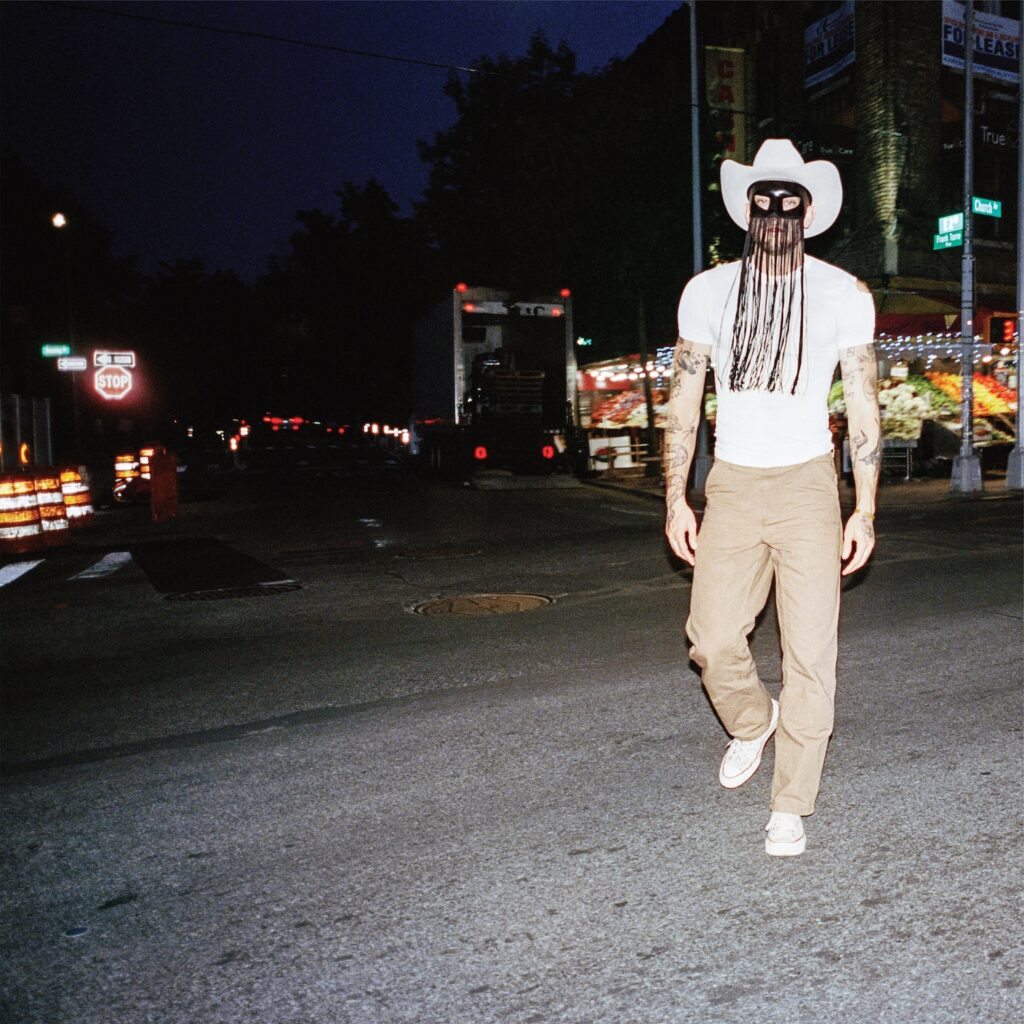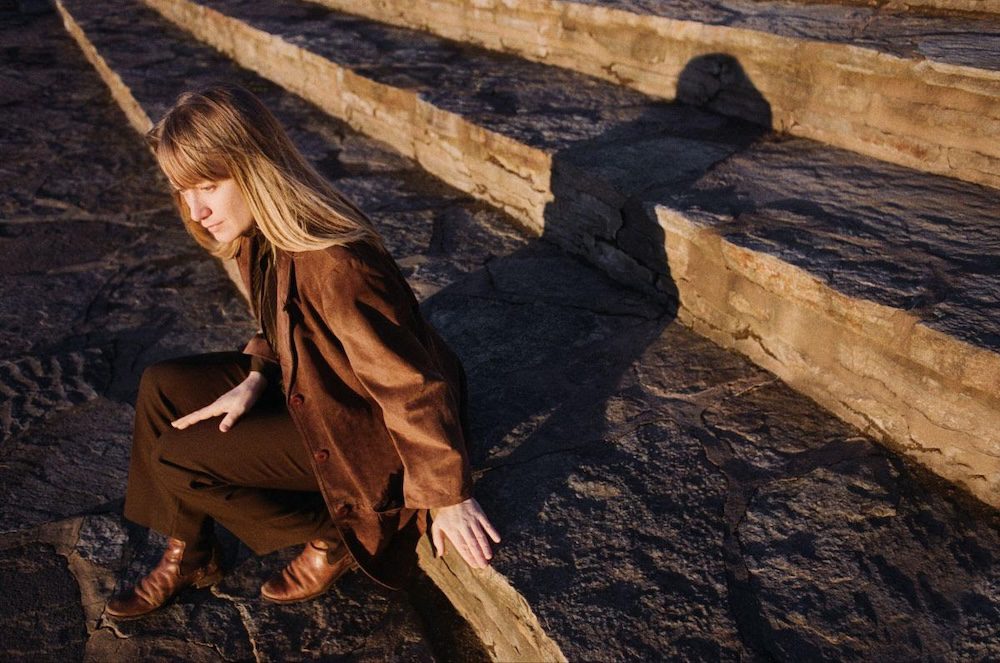
Growing up, Nick, a choir boy, attended his father’s alma mater, Marlborough College, a private boys boarding school, where he played clarinet and saxophone. Then, in September 1964, at age 16, he learned the guitar. An accomplished athlete with massive, muscular hands, he quickly took to the instrument, wrapping his huge thumb around the guitar neck to hold the low E-string. Soon, he was rarely seen without his guitar, playing songs by Bob Dylan, Paul Simon, and Peter, Paul, & Mary.
After Marlborough, Nick barely squeaked into Fitzwilliam College, University of Cambridge, where he studied English. But to his parents’ chagrin, he soured on academia. “Darling Nick, I was rather grief-stricken to hear your condemnation of all things pertaining to Fitzwilliam,” Molly wrote on November 29, 1967. “It seems your disappointment and disillusion are complete.”
Instead of studying, Nick played his guitar for endless hours, and while it didn’t earn him a Cambridge degree, it paid off in its way. On December 21, 1967, he was asked to play at London’s Roundhouse, where Ashley Hutchison of Fairport Convention was in attendance. Enthralled by his performance, Hutchison introduced him to Joe Boyd, a 25-year-old American musical impresario whose credentials included producing Pink Floyd’s debut single, signing the Incredible String Band, and running sound for Bob Dylan when he went electric at the 1965 Newport Folk Festival.
[embedded content]
Up, Then Down
Joe Boyd helped launch Nick’s career, eventually landing him on Island Records and pairing him with John Wood, the co-owner of London’s Sound Techniques studio, a skilled, no-nonsense engineer. Wood immediately took to Nick, and Nick to Wood. By May 1968, only three-and-a-half-some years after picking up the guitar, Nick, age 19, was recording Five Leaves Left, an album steeped in sadness, tinted with jazz (not unlike Van Morrison’s Astral Weeks, which was released around the time), and anchored by his complex, yet flawless, guitar-playing.
Five Leaves Left, a sort of soundtrack to Nick’s bucolic upbringing, featured Fairport Convention’s Richard Thompson; Pentangle’s Danny Thompson; Robert Kirby, a Cambridge friend who provided string arrangements; and Harry Robinson, the 1970s Hammer horror film composer, who orchestrated Nick’s 5/4 masterpiece, “River Man.”
In support of the album, Nick opened for Fairport Convention at London’s Royal Festival Hall. Owing to its hushed complexity, his music was rarely well-received at noisy music venues, and he soon stopped playing live altogether, but this night was different: All eyes and ears were with Nick, including his mother’s. Visibly shaking with nerves, he performed a brilliant set at the 2,500-seat venue. “We dared not show ourselves because we were afraid it would absolutely throw him,” Molly said in a 1992 interview. “We crept in … One almost wanted to say, ‘That’s my son!’ But we were quiet as a mouse.”
Due to poor marketing, dismissive reviews, and Nick’s reluctance to play live, Five Leaves Left flopped. But Nick was now on a mission to “help” as many people as possible with his music. To his parents’ chagrin, he quit Cambridge, moved to London, and began working on his second album, Bryter Layter.
With more contributions from Fairport Convention, including bassist Dave Pegg and drummer Dave Mattacks, Bryter Layter was more commercial than Five Leaves Left. John Cale played on “Fly” and “Northern Sky,” and while Nick’s performance remains understated, the arrangements and supporting musicians bring a new energy to his songs, resulting in a poppier affair. If Five Leaves Left evokes the pastoral settings of Tanworth-in-Arden, then Bryter Layter, recorded while Nick lived in London, channels his urban days.
In a March 19, 1971, letter to Nick, Molly offered her own review of Bryter Layter: “I have been meaning to write … to tell you how very impressed and delighted I am with your record. I love it all and each different song grows on you the more you play it — fresh subtleties come to light with each hearing. I particularly love ‘Sunday,’ which is so haunting, and I find it continually running through my brain. I am becoming very fond too of ‘Northern Sky’, and as for ‘Poor Boy’, I think it is splendid and deserves to be a hit.”
[embedded content]
It wasn’t. After Bryter Layter failed to sell, Nick developed a strange mental illness. At the time, mental health issues were grossly stigmatized and under-researched, and no one knew exactly what was wrong with Nick; they only knew he barely spoke and, instead, stood stooped over, looking forlorn. In time, his nails grew long, his clothing was disheveled, and his hair shined with a sheen of grease. But remarkably, even after Nick’s first two albums failed to sell and his health had clearly declined, Joe Boyd, John Wood, and his record label, Island, never stopped believing in him. Such faith and compassion resulted in Pink Moon, a 28-minute masterpiece recorded over two nights in late October 1971, with both sessions booked from 11 p.m. to 2 a.m. Save for the sparse piano on the title track, the album features only Nick and his guitar.
“Nick was adamant about what he wanted,” said Wood in a 1980 KRO radio interview. “He wanted it to be spare and stark, and he wanted it to be spontaneously recorded … He would sit in the control room and sort of blankly look at the wall and say, ‘Well, I really don’t want to hear anything else, I really think people should only just be aware of me and how I am.’ ”
How Nick was was unwell. Things were bleak. Still, when he was in the full throes of his illness, Nick couldn’t compose, perform, or even talk, let alone execute an album of Pink Moon’s caliber, spoiling the oft-touted theory that the album was born out of utter despair. “Some [of the songs] were done in one take,” Wood said, “but none took more than three.”
Technically, the album is far from perfect. The guitar on the title track is sharp; on others, it buzzes, sputters, and pops. Songs like “Know” and “Harvest Breed” feel fractured, albeit fitting. Nick’s voice, honest as ever, wavers as if he’s struggling to get the 11 songs on tape. But paradoxically, it’s the weakness in Pink Moon — both technically and emotionally — that ranks it as one of the most raw, bleak, and beautiful statements in recent music history.
[embedded content]
Unfortunately, like Nick’s first two albums, Pink Moon failed to sell upon release. After recording the album, he returned to Far Leys to live with his parents, who did everything they could to help him, only to helplessly watch him decline. According to Rodney’s diary, in July 1972, a despondent Nick told his father that “he’d finished his life’s work and had done more than many in a lifetime. One day, people would realize.”
But contrary to this assertion, Nick wasn’t yet finished with his life’s work. On Monday, July 1, 1974, he drove to London to record with Joe Boyd and John Wood at Sound Techniques. To their dismay, Nick was so debilitated that he could no longer play and sing at the same time, forcing Wood to record the guitar and vocals separately, something he’d never had to do before. Nick barely eked out four songs: “Rider On The Wheel,” “Hanging On A Star,” “Black-Eyed Dog,” and “Tow The Line.” If Pink Moon was not born out of utter despair, these tracks were. They are hard to listen to, especially “Black-Eyed Dog,” a song that seemingly alludes to Winston Churchill’s euphemism for depression: “the black dog.”
In September 1974, Nick scrawled the track listing for his fourth album in pencil on a sheet of paper. Side A featured five songs he’d already demoed, complete with a check mark beside each one: “Voices,” “Black-Eyed Dog,” “Rider On A Wheel,” “Hanging On A Star,” and “Tow The Line.” Side B featured five songs he had lyrics for but had yet to record: “Saw You On A Starship,” “Old Fairytale,” “Even Now,” “On This Day,” and “Long Way To Town.”
On November 6, 1974, Joe Boyd wrote to Nick: “I still would really like to do another album with you and I hope I will be back in London long enough this winter to get something done with you.”
Nineteen days later, Nick died.
A Sisyphean Task
In late October, before Nick died, he’d bought his mother a birthday gift, the original French version of Albert Camus’s The Myth Of Sisyphus. The essay, published in 1942 as Le Mythe de Sisyphe, argues that life is essentially meaningless. Like Sisyphus, forever rolling his boulder up and down the hill, Camus contends that we foolishly fight against the absurdity of life. For Sisyphus, suicide was not an option, so then, according to Camus, we must learn from the Greek legend: the only sane alternative is to accept life’s absurdity, to rejoice in rolling the boulder up and down the hill, and in the process, to hopefully find our true selves, too.
Molly’s 59th birthday was November 5, 1974, and Nick had sent The Myth Of Sisyphus several days before, hoping it’d reach her in time; however, due to a French postal strike, the book arrived several weeks after Nick died.
[embedded content]
Strange Tapes
Over time, as the Drakes were figuring out how to cope with the loss of a child, a wound that never fully heals, an unexpected salve appeared: Nick’s music refused to be buried. Slowly, it was rediscovered, and as fans appeared at Far Leys, some traveling thousands of miles, the first faint echoes of Nick’s influence appeared. Thrilled, Rodney began handing out cassettes of Nick’s unreleased material as welcoming gifts. But there was more music in his father’s archive.
In the 1950s, Rodney had purchased a reel-to-reel tape recorder to make family home recordings, mainly of Molly. “Understanding, as he always did, the private nature of her creative work,” wrote Gabrielle in Remembered For Awhile, “my father would set up the machine and leave her to record her songs on her own.” Molly never imagined anyone would ever hear her songs. They did.
On June 4, 1993, Nick’s mother died at age 77. After her death, as her son’s audience continued to grow, so did interest in his life, resulting in the unearthing of several Drake family artifacts. The most intriguing of those is a tape of Molly’s 1950s home recordings: a collection of songs, most under two minutes, that feature her soft voice, minimal piano playing, and poetic lyrics.
On the recordings, again, made for herself alone, Molly sheds her facade to reveal a world of anguish, playfulness, and despair. But even with her mask off, at her core, she’s still an upper-middle-class woman with a refined British accent, making the contrast between the darkness and decorum, which looms above ambient 1950s tape hiss, an eerie listen.
But by far, the similarity between mother and son is eeriest of all.
“This is the missing link in the Nick Drake story,” said Joe Boyd. “There, in the piano chords, are the roots of Nick’s harmonies.”
He’s right. For years, fans tried to solve the riddle of Nick Drake, wondering where his mysterious sound was born. All along, the answer lay in the most obvious of places — with his mother.



